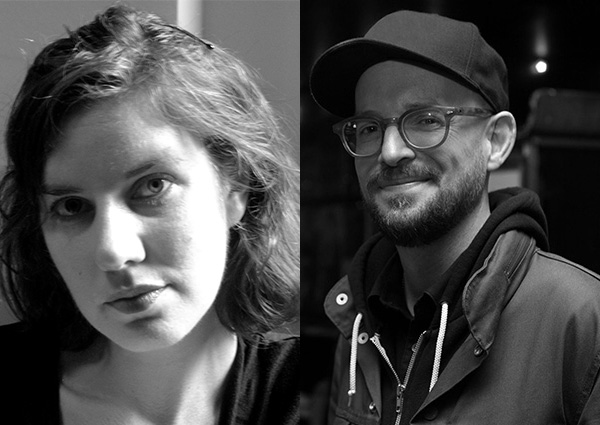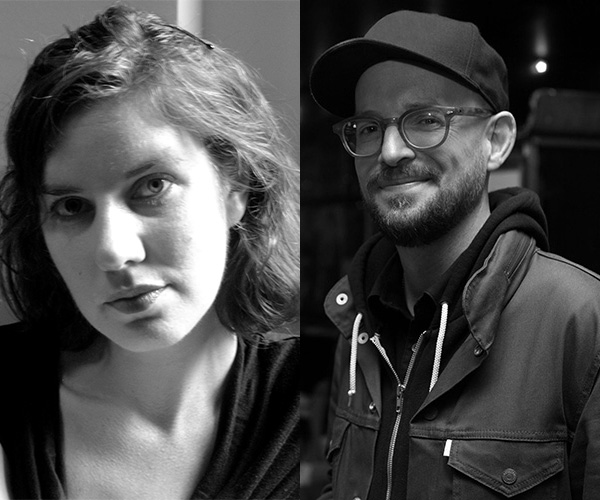
“Science fiction films are not about science,” Susan Sontag once wrote. “They are about disaster, which is one of the oldest subjects of art.” This observation could easily serve as an epigraph to Such Mean Estate, a new collaboration between photographer Ryan Spencer and essayist Leslie Jamison, which explores the aesthetics of disaster and Hollywood’s attempts to address global issues such as climate change. Released this summer by powerHouse Books, the volume interweaves photographs of episodes from apocalypse movies with what Jamison refers to as her catechism: an essay structured as a series of questions and answers pertaining to the images on the page. The sources of the photographs aren’t named, but fans of Children of Men, The Last Man on Earth, Le Temps du Loup, The Road, and Mad Max may recognize the occasional familiar scene washed into evocative grays by Spencer’s lens.
Sontag wrote that apocalypse movies offer a particularly “pure” form of spectacle, because “we are rarely inside anyone’s feelings.” She argued that witnessing destruction on an enormous scale, on a flat movie screen, opens up a space in which we can find relief from our own day-to-day sadnesses—the kinds of personal catastrophes that thrive in more intimate conditions. One of the interesting things about Spencer’s photography is the way it turns this idea on its head. In Such Mean Estate, he transforms mass entertainment into a series of elliptical stills, sometimes depicting only one or two half-glimpsed human figures, with the disaster often seeming to occur just outside the frame. Spencer’s images manage to shrink the impersonal into something quiet and unsettling. They encourage us to pause and to exercise our empathy. Spencer’s preference for compositions that aren’t always formally balanced also gives the photographs a disturbing air of realism—they could be shots emailed to a news channel from some far corner of the country, documentary evidence rather than Hollywood fiction.
Both Spencer and Jamison have previously created art that explores disaster. Spencer’s photography series Romance & Adventure chronicled the appearance of the World Trade Center in popular film. Leslie Jamison made the New York Times bestseller list last year with The Empathy Exams, a collection of essays exploring moments of personal crisis and the process of attempting to imagine oneself into other people’s pain. During July and August, I exchanged emails with both of them. We discussed their interest in breaking down distinctions between high and low culture, what their book emphasizes about climate change, and their shared hope that “collective terror” in American society may yield, instead of deeper self-interest, “productive collective action.”
—Jonathan Lee for Guernica

Guernica: In both the essay and the images in Such Mean Estate, there’s this productive sense of outsider-ness—of what it’s like to be on the fringes, looking in, knowing something or knowing nothing, as the world beyond the frame is about to go to shit. Is that outsider-ness part of what you wanted to explore with this book?
Ryan Spencer: I wanted to personalize certain moments that I found in the material. Watching these disaster movies in the theater with your popcorn, and hundreds of other people, is really about a shared experience, so here I wanted to make that experience more intimate and reflective and have it seem like you are looking at photographs taken by a person, not made by a huge studio. People don’t really have a lot of peripheral vision as to what’s happening on a greater scale. For me, it’s definitely more about that sense of mystery, and not knowing, and the loneliness that many of us would feel if suddenly we were all disconnected. That’s what I wanted to get across in the book.
Leslie Jamison: On the level of narrative possibility, I was really drawn to the sense of aloneness that rose from so many of these images—the terrifying possibility of being the last person left on earth, or even the last person left in a neighborhood, a swamp, a freeway. That stark haunting irony of living in a world of excess that has eventually collapsed on itself, emptied out. I also like the way that apocalypse scenarios in film sometimes allow an outsider—a wacko scientist, ignored Cassandra prophet, loner—to play some crucial or necessary role, to become part of his community again.
I also liked my own role as a kind of outsider in Ryan’s project—he’d had his own relationship to the work, generated all these images, had these ideas about what they meant or how they fit together. I looked at them with ignorance and newness and wonder, wrote the accompanying essay from outside his generative impulse, brought my own. In that sense there was an interesting simultaneity at work—the process was a collaboration but there was also a wonderful kind of autonomy and generative isolation embedded in it.
I find it interesting to see that what scares us the most are often things that are beyond human control, or things that we have created that have gotten out of our control.
Guernica: Have you two always had an interest in disaster narratives?
Ryan Spencer: I had seen a lot of disaster movies previous to starting this project, but the movies I focused on for Such Mean Estate were specifically those which had some environmental or ecological plot or message. I was somewhat loose about this, so it could be a cataclysmic storm, or bee swarm, or rampaging virus—just something where humans were being terrorized by nature on some level. I think that is kind of the ultimate fear, because it is an enemy that is irrational, unpredictable, and larger than life. I find it interesting to see that what scares us the most are often things that are beyond human control, or things that we have created that have gotten out of our control. I would comb through these films looking for the bits that I wanted to use. I’d re-watch those sections, frame by frame, until I found what I thought would work best for my photos. Then I would take the shots of the screen using an old Polaroid Land Camera.
Guernica: You’ve worked with images of destruction before in your Romance & Adventure project.
Ryan Spencer: Yeah, that earlier series was a chronicle of World Trade Center Towers 1 and 2 as they appeared in mainstream cinema when I was growing up. Obviously the symbolism of those buildings has been forever changed, so looking back at those films when working on Such Mean Estate, it was interesting to see the banality, almost, of their presence. They were so often used simply to establish the setting in movies—“Oh, look, we’re in New York!” Romance & Adventure was looking at those movies as artifacts of “pre-disaster,” I guess, and looking at that pre-disaster from a distance. The series was made during a period when I left New York for a few years and was living in Las Vegas.
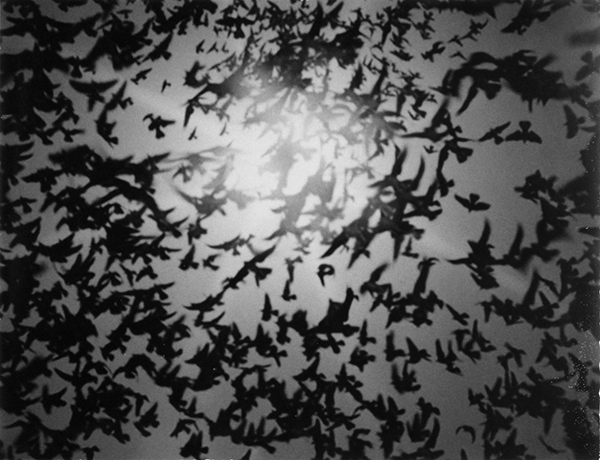
Guernica: Leslie, maybe you can talk a bit about specific images in the book that sparked your imagination and made you want to be involved in the project.
Leslie Jamison: Ryan approached me about the possibility of writing something for a book of photographs he’d put together—we didn’t know each other, then had been connected by a friend—and any part of me that wanted to be practical or savvy or efficient (it was a crazy time for me, work-wise) was totally vanquished by the immediate fascination of his premise: I thought a collection of stills from apocalypse films was awesome—for lack of a more sophisticated word—and had been fascinated by various visions of the apocalypse for a while myself. Then I saw the images themselves and was totally in their thrall. I loved that I mostly couldn’t place them in narratives—it made them more compelling. Two of the ones that really struck me at first—a blurred man poking at a spider web, and two men in hazmat suits holding up the prone body of a woman—stuck with me partially because of their narrative ambiguity: I could easily imagine, in a minute, ten different storylines they could be part of. The guys could be saving that woman, or kidnapping her, or offering her as ritual sacrifice to a cruel set of alien gods. Who knows? I loved that uncertainty.
Guernica: When did your interest in photography begin, Ryan, and when did you start looking toward moving images for inspiration?
Ryan Spencer: I always had cameras and remember taking pictures and making things with photographs at an early age. I drew a lot, too, and liked the technical aspect of architectural rendering. In high school I took my first darkroom class and loved it, and joined yearbook as a photographer for a while. It was around that time, too, that I started making kind of crazy movies with my friends. We didn’t have any editing equipment or anything, so just had to shoot everything in order, in one take. This was the early 1990s and we were just using a camcorder.
Later, in college, was when I started experimenting with re-photographing videos I made, or other pictures. I’d make collages with Polaroids from negatives or slides. Then when I was in graduate school at Pratt I was shooting mostly with a Super 8, then projecting and re-photographing that way. I never really thought about being a filmmaker, though. I just liked the freedom of letting the camera roll, then picking out the individual frames later. From there it was easy for me to decide to work in the same way for Such Mean Estate. The main difference is that I’m using existing movies as the source material for my pictures.
It’s all about what form can get me deeper into the beating heart of what I’m troubled or confused or fascinated by.
Guernica: Leslie, does Ryan’s description of that process of stumbling across the right methods for artistic expression in this project resonate at all with your own experience? You started as a fiction writer before turning to essays in The Empathy Exams. When you have an idea, what makes it feel, to you, like better subject matter for an essay than a piece of short or long fiction? What can essays do that fiction perhaps can’t?
Leslie Jamison: The idea of stumbling rings true, because I’m rarely drawn to genre for its own sake. It’s more like I have something that I want to write about and then I fumble my way toward the right form. When my grandmother was dying, I started taking notes on what it was like to live with her, but I had no clear sense of what they’d become. It was only once I started working with them that I realized in order to explore what I wanted to explore (how mortality can unearth old secrets, make us desperate for intimacy or re-acquaintance with a lost past) I wanted to construct a fictional arc. With an essay, it takes the shape of an essay because I want to write something from the world—from my own life, or something outside—and the distortions of fiction feel like an evasion, or a dilution, rather than a means of access. It’s all about what form can get me deeper into the beating heart of what I’m troubled or confused or fascinated by.
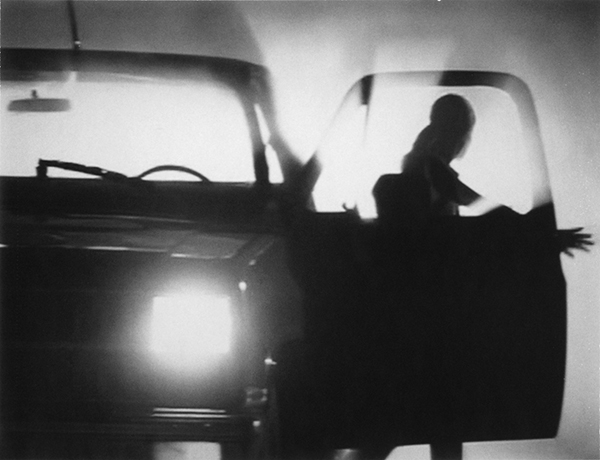
Guernica: And how did you go about finding the right tone and shape for this particular essay in the book? It might have been more straightforward for the essay to tie in more literally with each image, but you chose a different approach.
Leslie Jamison: I wanted to find a form that expressed some version of my own emotional reaction to the images—which held curiosity and fear and wonder—and I felt that a more straightforward analytic approach would threaten a false cohesion, or imply a false sense of remove. Importing too much linear narrative on the images threatened a (different) kind of false cohesion as well. Ultimately questions felt way more honest than anything else, and the form of a catechism (even though it turned into a very strange one) summoned this practice of pedagogy and sense-making—learning the basic rules of the world. But here it was learning the rules of how the world falls apart.
Guernica: There’s a certain stigma attached to movies like The Day After Tomorrow, or 12 Monkeys—that the high entertainment value automatically means they’re low art. Do either of you think about mass culture versus so-called high culture in your own work?
Leslie Jamison: One way that the tension between mass culture and high culture comes up in my work has to do with questions of sentimentality and pain—how the aesthetic fear of sentimentality, or the fear of seeming indulgent or narcissistic in representing pain, can repel writers from certain kinds of work; how I’ve felt myself repelled by certain kinds of work. And I think that the resistance to sentimentality can drive us away from risking feeling, but I also think it asks us to resist certain kinds of easy narratives (which is a good thing). It asks us to resist happy endings, neat moral messages, black-and-white characters. And I liked Ryan’s photos for a lot of the same reasons: they seemed to insist on complexity without being shrill about it, while still playing. I think that idea of play is so key to pushing back against sentimentality, too—allowing feeling to exist alongside innovation and experiment. I’m deeply interested in shame—as subject and affective experience—and have found myself drawn to thinking and writing about tastes that I’m ashamed of: artificial sweeteners and pop ballads.
Ryan Spencer: I do think about high versus low culture a lot in my work. I found I was reflexively drawn to the movies that had the biggest budgets, the most over-the-top effects, and which are the most populist in their target audience. For me, those are the movies that are the most seductive but also the most visually challenging; it’s hard to find moments of quiet or stillness within the bombast and chaos, or to take one of those scenes and distill it into a single image. There isn’t really a formula to how I make or choose the images, but I would say more often than not I was drawn to the blockbusters. They may not be Oscar winners but I find them endlessly fascinating, even if only on a visual level. A lot of times I would just put on whatever music I thought would fit the film, or the mood I was going for with the pictures, and just watch the movie without the audio.

Guernica: I’m interested in the frames in the book that show no easily discernible image—the white frame, then the light-gray one in the middle, and then the black one at the end. Can you talk a little about your decision to include those?
Ryan Spencer: Those are actually just blank frames, like a blank screen. I worked with a truly gifted designer named Takaaki Okada and that was his idea. I wanted there to be divisions in the book to mark chapters, but since there is no text once you get into the pictures—no titles or even page numbers—we thought it would be weird to have roman numerals, so those were our solution. It starts with white, then shifts to grays, then black by the last one. I had loose titles for the chapters as well, but I decided not to include those either, just let the images and their placement and the pauses move the reader, or viewer, I guess you’d say, through the narrative.
When I was starting to think of this project as a book, I was looking a lot at Lynd Ward’s woodcut novels and those really influenced the way I thought about placement and sequence and juxtaposition of images. His books force the viewer to really “read” the pictures and to envision the narrative in your mind as you move from image to image and page to page, but also let each image hold its own space as well. Another key inspiration for this project was Masahisa Fukase’s book The Solitude of Ravens, which I think beautifully captures the tension between nature and industry. The photos in that book are obsessive to the point of being heartbreaking and are very much made in the long shadow cast by the aftermath of the Second World War.
Guernica: I noticed a piece of analysis of the photographs by one commentator online, and something that caught my eye was the statement that “the images are an argument for a less apathetic and desensitized look at themes of destruction in visual culture.” Is that what you are aiming for? It seems to me you’re both interested in perpetuating or playing with that desensitization in some way—Ryan’s decision, for example, to barely ever show the faces of the people in the photographs.
Ryan Spencer: I like the idea of re-sensitizing people to images of destruction, even if they are sensations of panic or fear. The whole thing about not showing faces was a decision I made early on, in part because many of the actors are very recognizable Hollywood stars and I didn’t want that to be distracting. I also wanted the pictures to draw you in so you are looking with the subjects rather than at them. When you see a portrait, for instance, the face looking back can stop your eye from wandering about the rest of the photograph.
I think there is something in this shared terror that makes us feel less alone.
Guernica: Is there a social and political element to what you’re both doing in Such Mean Estate? Were you interested in saying something about the safety, or lack of it, of the world we live in now?
Ryan Spencer: I don’t want to proselytize anyone, but I do think that we are creating a world that is less, rather than more, inhabitable. The pervasive “wait and see” attitude regarding our actions and the consequences is reckless, to say the least—I’m talking about human influence aggravating climate instability. This shows up in some of the films I used in my project, and to me they are provocative. Like a lot of science fiction, they are worst-case scenarios based on elements of truth. So it’s not like we are totally oblivious to some potential consequences of what we are doing, and the fact that that has been exploited to make summer blockbusters can bring attention to, but also somewhat cheapen, the problem.
That said: people do derive real pleasure from this entertainment. So, part of my fascination is with what is at the heart of that collective consciousness. I think there is something in this shared terror that makes us feel less alone. I guess this is the conceit of any horror film: we are terrified, but we are terrified together. So what is it that we are afraid of? In these films, we eschew the fear of death by justifying death as a heroic act, but what about the fear of pain? The fear of loneliness? I think fiction addresses these fears in a way that is palatable. “What if” is often less scary than “what is.”
Leslie Jamison: The way we are inhabiting our world right now isn’t tenable, and I do think there’s so much danger in our apathy. I can be guilty of this too. I liked the ways these images showed us a world driven to extremes—and often showed human figures in isolation, trying to navigate those extremes—without resorting to a kind of language that’s perhaps become too familiar to have the kind of impact we’d want it to. There’s no jargon in these images, and no answers—only an exploration and manifestation, as Ryan mentioned, of certain fears: fears that are worth listening to. I’m thinking about Ryan’s words about shared terror, and wondering what would happen if somehow collective terror could always yield productive collective action. So often it drives us deeper into self-interest instead.
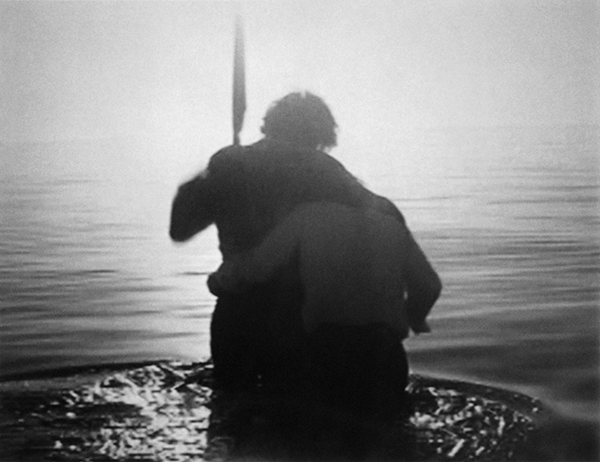
Guernica: You chose a line from Frankenstein as the epigraph to the book: “My mind was intently fixed on the consummation of my labor, and my eyes were shut to the horror of my proceedings.” Can you explain this decision?
Ryan Spencer: That’s the part where Frankenstein decamps to Scotland, I think, to create a bride for the monster. I thought it spoke to the overarching theme of the project. It’s about battling a monster that we have created, so we are really just at war with ourselves. We know it’s a bad idea, but we forge ahead, full steam, regardless. Someone made the comparison between Wile E. Coyote and climate change: we are at the point where he has run off the cliff, but not looked down yet. We can’t stop to look down, or look back, because then we’d know that we are royally fucked.

